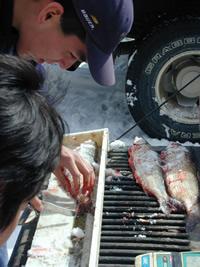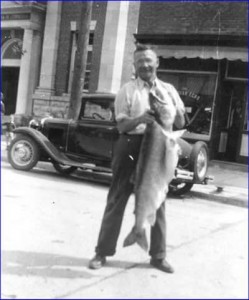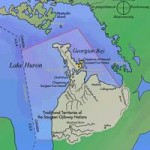Fisheries Assessment Program
Fisheries Assessment Biologist
Ryan Lauzon
Tel: 519-375-1012
Email: nawash.fisheries@gmail.com
Fisheries Assessment Assistant
Jordane Chegahno
Tel: 519-379-0920
Email: nawash.fisheriesassistant@gmail.com
Fisheries Research Coordinator
Breanna Redford
Tel: 1-705-464-0712
Email: redford.researchcoordinator@gmail.com
Office Address
50 Farm Road
Neyaashiinigmiing, ON
N0H2T0
Mailing Address
Fisheries Assessment Program
135 Lake shore Boulevard
Neyaashiinigmiing, ON
N0H 2T0
 The Chippewas of Nawash Fisheries Assessment Program is a long-term data collection program that samples commercially harvested fish from Lake Huron/Georgian Bay. The biological data collected by the Assessment Program is an integral factor in the management of Lake Huron fish stocks and aids Nawash Council in sound management decision-making regarding their fishery. The Assessment database provides a complete and standardized historical record of commercial fish harvest and the associated biological data within the traditional waters from 1995 to the present.
The Chippewas of Nawash Fisheries Assessment Program is a long-term data collection program that samples commercially harvested fish from Lake Huron/Georgian Bay. The biological data collected by the Assessment Program is an integral factor in the management of Lake Huron fish stocks and aids Nawash Council in sound management decision-making regarding their fishery. The Assessment database provides a complete and standardized historical record of commercial fish harvest and the associated biological data within the traditional waters from 1995 to the present.
The general objective of CNFAP is to provide Band Council with current, year-to-date information on the commercial harvests of Nawash commercial fishermen. In particular, Council requires data on (i) the quantity/quality of fishing effort deployed by operations within the fleet, (ii) the quantity/quality of gross harvests of fish species associated with the deployed effort, and (iii) sub-sampled measures associated with the biological condition (e.g. growth, age, etc.) of the gross commercial harvest. Age data, in conjunction with length and weight measurements, are used to build statistical models of composition, age at maturity, life span, mortality, growth and production of lake whitefish stocks in Lake Huron.
Taken together, these data will allow Council to engage in three vital aspects of fisheries management:
1. monitoring of year-to-date commercial harvests, relative to the total allowable catches (TACs) established by Joint Council,
2. biological analysis of variation (through space and time) in the fleet's deployment of effort and gross harvests,
3. biological modeling of fish population parameters (e.g. abundance, growth, mortality), and analysis of past and future effects of harvesting on population parameters
The Chippewas of Nawash Unceded First Nation operate two mobile fisheries crews which meet the fleet at the various ports of landing around the Saugeen Peninsula. The main ports of landing include Dyers Bay, Howdenvale, Lions Head, Oliphant, Pike Bay, Sauble Beach, Southampton, Stokes Bay and Tobermory.

